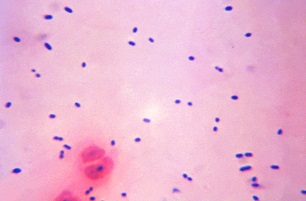Summary
Definition
History and exam
Key diagnostic factors
- fever
- vomiting/nausea
- irritable/unsettled
- headache
- altered mental state
- neck stiffness
- photophobia
- seizures
- focal neurological deficit
- rash
- shock
- raised intracranial pressure
- back rigidity
- bulging fontanelle
- Kernig’s sign
- Brudzinski’s sign
- apnoea
- presence of risk factors
Other diagnostic factors
- lethargy
- ill appearance
- refusing food/drink
- muscle ache/joint pain
- respiratory symptoms or breathing difficulty
- chills/shivering
- diarrhoea, abdominal pain/distension
- sore throat, coryza, or other ear, nose, and throat symptoms/signs
Risk factors
- age <2 years
- incomplete immunisation
- immunocompromising conditions
- cranial structural defects
- medical devices
- perinatal period
- exposure to pathogens
- contiguous infection
- crowding
Diagnostic investigations
1st investigations to order
- blood gas (including lactate)
- blood glucose
- FBC
- serum CRP, procalcitonin
- coagulation screen
- blood cultures
- serum PCR for Neisseria meningitidis
- urea, electrolytes, and creatinine
- LFTs
- cross-match
- CSF white blood cell count and examination
- CSF total protein concentration
- CSF glucose concentration
- CSF microscopy, Gram stain, culture, and sensitivities
- CSF PCR for Neisseria meningitidis and Streptococcus pneumoniae
Treatment algorithm
Contributors
Expert advisers
Emre Basatemur, MRCPCH, PhD
Consultant in Paediatric Emergency Medicine
The Royal London Hospital
London
UK
Disclosures
EB declares that he has no competing interests.
Peer reviewers
Kavita Sethi, MBBS, MD Microbiology, DTM&H, FRCPath
Lead Clinician and Consultant Microbiologist
Leeds Teaching Hospitals NHS Trust
Leeds
UK
Disclosures
KS developed educational material for the Royal College of Pathologists, and received sponsorship to attend the European Congress of Clinical Microbiology and Infectious Diseases (ECCMID).
Peer reviewer acknowledgements
BMJ Best Practice topics are updated on a rolling basis in line with developments in evidence and guidance. The peer reviewers listed here have reviewed the content at least once during the history of the topic.
Disclosures
Peer reviewer affiliations and disclosures pertain to the time of the review.
Editors
Annabel Sidwell
Section Editor, BMJ Best Practice
Disclosures
AS declares that she has no competing interests.
Tannaz Aliabadi-Oglesby
Lead Section Editor, BMJ Best Practice
Disclosures
TAO declares that she has no competing interests.
Adam Mitchell
Drug Editor, BMJ Best Practice
Disclosures
AM declares that he has no competing interests.
References
Key articles
National Institute for Health and Care Excellence. Meningitis (bacterial) and meningococcal septicaemia in under 16s: recognition, diagnosis and management. Feb 2015 [internet publication].Full text
van de Beek D, Cabellos C, Dzupova O, et al. ESCMID guideline: diagnosis and treatment of acute bacterial meningitis. Clin Microbiol Infect. 2016 May;22 Suppl 3:S37-62.Full text Abstract
National Institute for Health and Care Excellence. Fever in under 5s: assessment and initial management. Nov 2021 [internet publication].Full text
Meningitis Research Foundation. Management of bacterial meningitis in children and young people. Sep 2018 [internet publication].Full text
Reference articles
A full list of sources referenced in this topic is available here.
Use of this content is subject to our disclaimer
